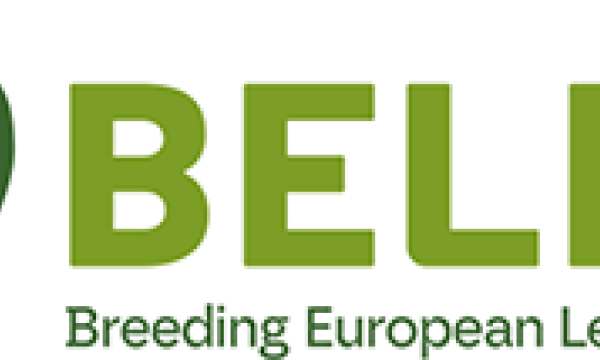Press release A value chain for maize straw in the bioeconomy of Flanders?

In Flanders, 120,000 tons of maize (corn) straw could theoretically be taken from the field each year as a raw material for the bioeconomy. But who is going to organize that? And is it possible at all? According to ILVO-UGent PhD researcher Anouk Mertens, a value chain for Flemish maize straw in the bio-economy is a feasible option, despite the unstable supply. But any expansion will require focus, flexibility, organization and targeted funding. A value chain around Flemish maize straw can already draw inspiration from the success of Canadian farmers and processors. They produce sugars from maize and wheat straw.
Maize (corn) straw and bioeconomy
Flanders produces about 400,000 tons of maize straw each year. Usually this remains on the field and is plowed in. In this way it contributes to the supply of organic carbon in the soil. Previous research has shown that about one-third of it could be harvested without compromising the level of soil organic matter in maize fields. A good 120,000 tons are thus free as biomass and can be used as raw material in the bioeconomy. Possible uses include input to biogas plants, and the production of cellulose sugars and bioethanol. To realize this, a value chain must be developed that organizes the production, harvesting, transportation and processing of maize straw. This is a huge challenge, as maize straw is seasonal and producers are widely dispersed. ILVO-UGent researcher Anouk Mertens mapped the organizational challenges for these value chains in the bioeconomy through interviews and modeling.
Unstable supply of maize straw
Developing a new maize straw value chain in the bioeconomy carries an inherent risk, as farmer participation is variable, and therefore so is the maize straw supply. According to Anouk Mertens, that risk can be mitigated: "Our results show that by setting up a cooperative market organization structure, the supply of maize straw for large-scale processing can be partly stabilized." Nevertheless, caution is warranted: "In Flanders, large-scale processing is difficult. A possible solution lies in providing some flexibility in the way it is processed, where different biomass sources could be used," says the researcher.
Canadian model
A successful maize straw value chain does not yet exist in Flanders, but Ontario, Canada, has succeeded in setting up a bioeconomic value chain. "We can learn a number of lessons from them," says the researcher after an in-depth comparative study.
The maize straw value chain is currently being developed around Sarnia, a city located on the shores of Lake Huron. Since the 1980s, the region, known for its oil processing industry, has had a declining number of jobs. It was therefore decided to revitalize the industry in the region, but this time with a sustainable industry. Since sugars are the basis of many chemical processes, the choice was made to produce sugars from biomass, more specifically from maize and wheat straw.
In order to develop this value chain, an advisory committee was set up and included all of the actors involved: farmers and agricultural organizations, industry representatives, researchers, and policy makers. Based on several studies, the farmers decided to establish a cooperative, the Cellulosic Sugars Producers Cooperative. In this cooperative, farmers unite and invest together in a new plant that will produce the cellulosic sugars, operated by Comet Biorefining. The sugars will be sold to BioAmber. They will turn these sugars into succinic acid, which in turn can be converted into a whole range of products, from paints to artificial leather and plastics.
The success of the development of this value chain lies mainly in the common goal of the different actors, namely the production of cellulose sugars. A second success factor is the trust between the farmers and the processors that was created over time through the regular meetings. A third success factor is the fact that all possible actors involved were involved in the process from the beginning. This was done through the advisory committee, which was guided by Bioindustrial Innovation Canada. A final success factor was that sufficient funding was available at the right time.
Copy-paste to Flanders?
In recent years, a great deal of research has already been carried out in Flanders into the possible valorization of maize straw, and the potential of this raw material has gradually become clearer and clearer. The bundled research results can now form a Flemish basis for discussion and consultation with farmers and agricultural organizations, contract workers and contracting federations, the processing industry and policymakers. "There is of course no guarantee of success, but regular consultation between all actors involved can be the driving force behind a new value chain for maize straw in Flanders," concludes researcher Anouk Mertens.


